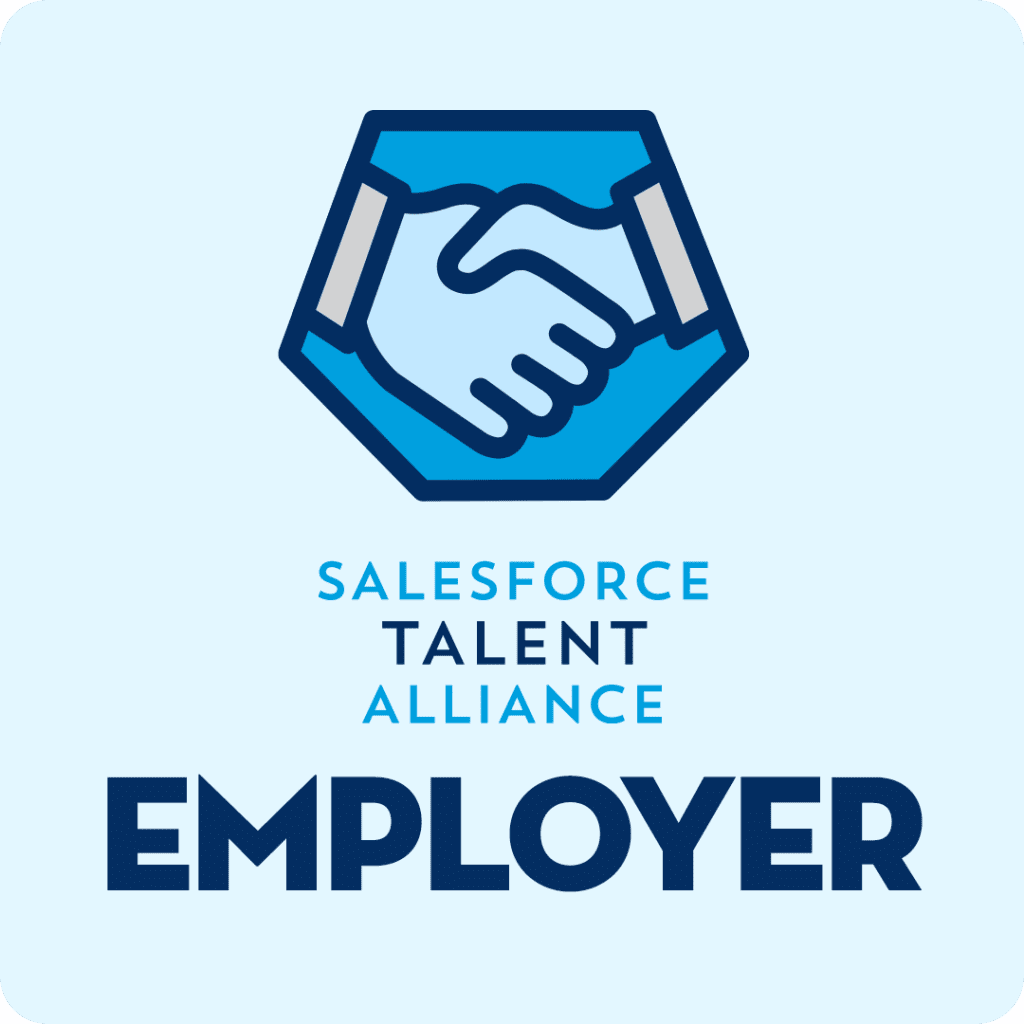Insights for AWS
end users

Attraction and retention
What factors truly matter to candidates? Understanding what encourages candidates to accept a position, as well as the challenges that drive them away, is crucial for effectively attracting talent, reducing turnover, and encouraging professionals to transition from other sectors.
However, in a dynamic and rapidly evolving ecosystem like AWS, these preferences can change from year to year. It’s essential to stay attuned to these shifts in order to develop sustainable talent pipelines that benefit in the short, medium and long term.
In this section, we’ll look at what appeals most to AWS professionals when taking the next step in the career journeys, giving employers a better understanding of how they need to adapt in order to stand out.
What encourages a candidate to take a role?
Better salary and compensation package than my previous role
Opportunities for career progression, development, or a defined career path
For personal development/to expand my skill set and experience
| For a new challenge | 33% |
| For a better work-life balance | 33% |
| To work in a different industry | 24% |
| The chance to work in a challenging role or on a challenging project | 21% |
| To escape a toxic company culture/for a better company culture | 19% |
| To gain flexibility in my working hours | 16% |
| To work for a prestigious organization with a great reputation | 16% |
| The opportunity for hybrid or remote flexibility | 14% |
| To pursue a leadership position | 13% |
| The new role was a promotion | 13% |
| To work for an organization with values that align with my own | 13% |
| Other | 9% |
What perks entice a candidate to accept a role?
Are employees looking to change employer?
Over two-fifths (44%) of respondents in permanent positions expect to remain with their current employer in the next year, while 35% are actively searching for new opportunities. Another 8% anticipate leaving but aren't currently job hunting, and 13% are undecided about staying or leaving.
Among those dissatisfied with their current role, 82% are looking to move, 12% intend to switch employers soon, and only 6% are content to stay.
Dissatisfaction with career progression is a key driver for seeking new opportunities. Of respondents unhappy with their advancement, 82% are actively job searching, and an additional 5% are considering a change in the coming year.
Salary dissatisfaction is also a factor, though to a lesser extent. Among respondents unhappy with their pay, 59% are actively looking for a new role, with another 9% considering a move.
What motivates an employee to consider a new role?
Salary increase/earnings increase
Lack of career and promotional prospects
Working environment/company culture
| To relocate to another country | 33% |
| I want to pursue more interesting/valuable work | 26% |
| I'm underutilized in my current role/company | 23% |
| Lack of exposure to latest AWS products | 21% |
| Desire/ability to work remotely | 21% |
| Lack of leadership and vision | 19% |
| Need new challenges | 19% |
On average, those looking to change roles for a pay increase would expect a 22% increase.
Over two-fifths (45%) of those looking to leave their employer within 12 months said they would be unlikely to accept a role that involved working in an office five days a week.
Takeaways for AWS users
With a number of respondents either actively seeking a new role or planning to leave their current positions this year, there are significant opportunities for AWS customers looking to hire talent. To take advantage of this, employers need to enhance their appeal. Our findings indicate that the most effective way to do this is by fostering a supportive work environment, particularly through flexibility, while a competitive compensation remains crucial.
While the perks that attract candidates have remained consistent over the years, it’s notable that the popularity of paid time off (PTO) has decreased, down from 42% in our last survey to 11% this time around. Instead, financial incentives dominate—most likely down to the financial squeeze being front of mind.
However, most budgets are finite so where there isn’t wiggle room or the opportunity to outbid, then there is still plenty of opportunity to create a more rounded, and appealing, package that offers learning opportunities and a better work-life balance.
Motivation to move from a partner to an end user
Two-thirds (66%, down from 69% in our previous study) of partner employees would consider working for an end user and cited the following factors that would encourage them to make this move:
| Possibility to develop skills across different AWS products | 60% |
| Ability to work remotely | 53% |
| Ownership over a project/system | 43% |
| Better benefits | 43% |
| Better work-life balance | 43% |
| More stability | 40% |
| Better training and learning opportunities | 40% |
| Consistency | 37% |
| Better career progression opportunities | 33% |
| Less stress | 17% |
| Less travel | 13% |
| Other | 9% |
Results here will be music to the ears of those working within end user organizations, as the opportunity to develop skills across different AWS products stands way out in front as the main reason employees may make the switch to an end user employer.
However, there’s much to reassure those businesses looking to hold onto their AWS talent as the ability to work remotely is one of a number of other appealing things that firstly, won’t bust the budget and, secondly, are likely to be perfectly achievable for partners.
Ultimately, AWS professionals want to be challenged, albeit not at the expense of a healthy work-life balance. It’s all about being flexible enough to roll with the punches.
We also asked the 17% (down from 12%) of respondents who could not see themselves making the move to an end user why they wouldn’t consider it, and their reasons were:
What do employers need to prioritize to maximize employee happiness and retention?
How satisfied are employees?
We asked our survey participants to rate their job satisfaction across a number of different areas:
| Satisfied | Neutral | Dissatisfied | |
|---|---|---|---|
| Colleagues | 77% | 20% | 3% |
| Working hours | 74% | 17% | 10% |
| Company culture | 71% | 14% | 15% |
| Benefits | 66% | 17% | 18% |
| Career progression | 53% | 25% | 22% |
| Training and development | 51% | 24% | 25% |
Colleagues
| Satisfied | Neutral | Dissatisfied |
|---|---|---|
| 77% | 20% | 3% |
Working hours
| Satisfied | Neutral | Dissatisfied |
|---|---|---|
| 74% | 17% | 10% |
Company culture
| Satisfied | Neutral | Dissatisfied |
|---|---|---|
| 71% | 14% | 15% |
Benefits
| Satisfied | Neutral | Dissatisfied |
|---|---|---|
| 66% | 17% | 18% |
Career progression
| Satisfied | Neutral | Dissatisfied |
|---|---|---|
| 53% | 25% | 22% |
Training and development
| Satisfied | Neutral | Dissatisfied |
|---|---|---|
| 51% | 24% | 25% |
How do employees rate their job satisfaction year over year?
| Satisfied | Neutral | Dissatisfied | |
|---|---|---|---|
| 2025 | 66% | 18% | 17% |
| 2024 | 64% | 26% | 10% |
| 2023 | 69% | 19% | 13% |
| 2022 | 64% | 22% | 14% |
| 2021 | 62% | 23% | 15% |
2025
| Satisfied | Neutral | Dissatisfied |
|---|---|---|
| 66% | 18% | 17% |
2024
| Satisfied | Neutral | Dissatisfied |
|---|---|---|
| 64% | 26% | 10% |
2023
| Satisfied | Neutral | Dissatisfied |
|---|---|---|
| 69% | 19% | 13% |
2022
| Satisfied | Neutral | Dissatisfied |
|---|---|---|
| 64% | 22% | 14% |
2021
| Satisfied | Neutral | Dissatisfied |
|---|---|---|
| 62% | 23% | 15% |
There has been an increase in overall satisfaction following a downturn last year, however, disappointingly there has been in rise in the proportion of employees dissatisfied.
Our findings also show that, for yet another year, candidates are least satisfied and most dissatisfied with the training and development offered to them. This underlines just how important professional development is, not just in the terms of the skills that you can add internally, but to increasing job satisfaction within your AWS team.
Elsewhere, there was a notable drop in satisfaction around career progression opportunities compared to our previous study (down from 59% satisfaction). It’s possible that this stagnation is reflective of wider economic instability and a lack of market growth, but with 76% of unemployed candidates reporting career progression as a top factor motivating them to accept an offer, and 55% of permanent employees accepting their current role because of the opportunities to develop their career, this is an area employers can’t afford to ignore.
How can you boost employee satisfaction?
Our data shows that it takes more than just a paycheck to keep AWS professionals happy in their roles. To keep your AWS team engaged and ensure job satisfaction doesn’t dip, focus on these high-impact areas:
Supporting growth and development
AWS professionals have a passion for learning, but fewer than half are satisfied with the training and development opportunities currently afforded to them. From dedicated learning time and certification funding to workshops, demos, and mentorship programs, invest in your employees’ development and lay the foundations for their professional growth. Not only will they be more satisfied, but you’ll have enhanced your team’s capabilities and expertise in the process too—win, win!
Carve clear progression paths
Complement your employees’ professional development with clear routes for progression—just make sure they’re unique to the individual goals and aspirations of each employee. Personalize paths by holding regular one-on-one meetings to map specific routes to success and provide the necessary support to help talent reach their full potential. By carving clear career paths within your organization, employees will feel more motivated, engaged, and valued: all key ingredients in the recipe for job satisfaction and employee retention.
Communicating clearly around AI
Job security and satisfaction go hand in hand. Some tech professionals are concerned about the impact artificial intelligence could have on their current role, so keep this in mind when strategizing around automation and implementing new solutions this year. Communicate clearly and regularly around your organization’s AI use and offer assurance on how these tools will be used to support—not replace—existing teams. For bonus points, consider how this tech can be used to automate the ‘boring’ parts of your team’s day-to-day to boost satisfaction further still!
How satisfied are employees with their salary?
- My salary is below the market standard
- Inflation is higher than my salary
- I’m not paid fairly for the experience and skills I bring to the organization


Careers and Hiring Guide
AWS Edition 2025
Key Findings
Our key findings report contains highlights from this year’s Careers and Hiring Guide, plus our salary tables to allow you to compare your compensation or benchmark your teams’ salaries or rates no matter their role in the AWS ecosystem.







